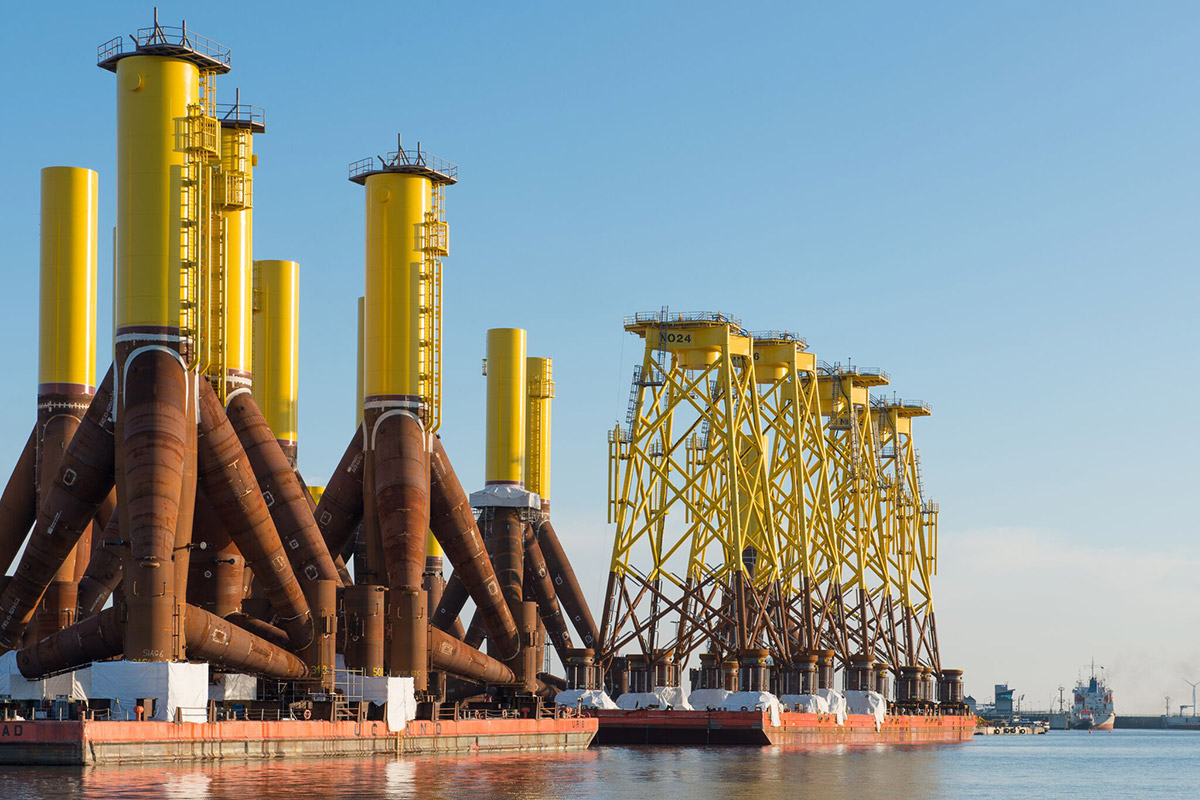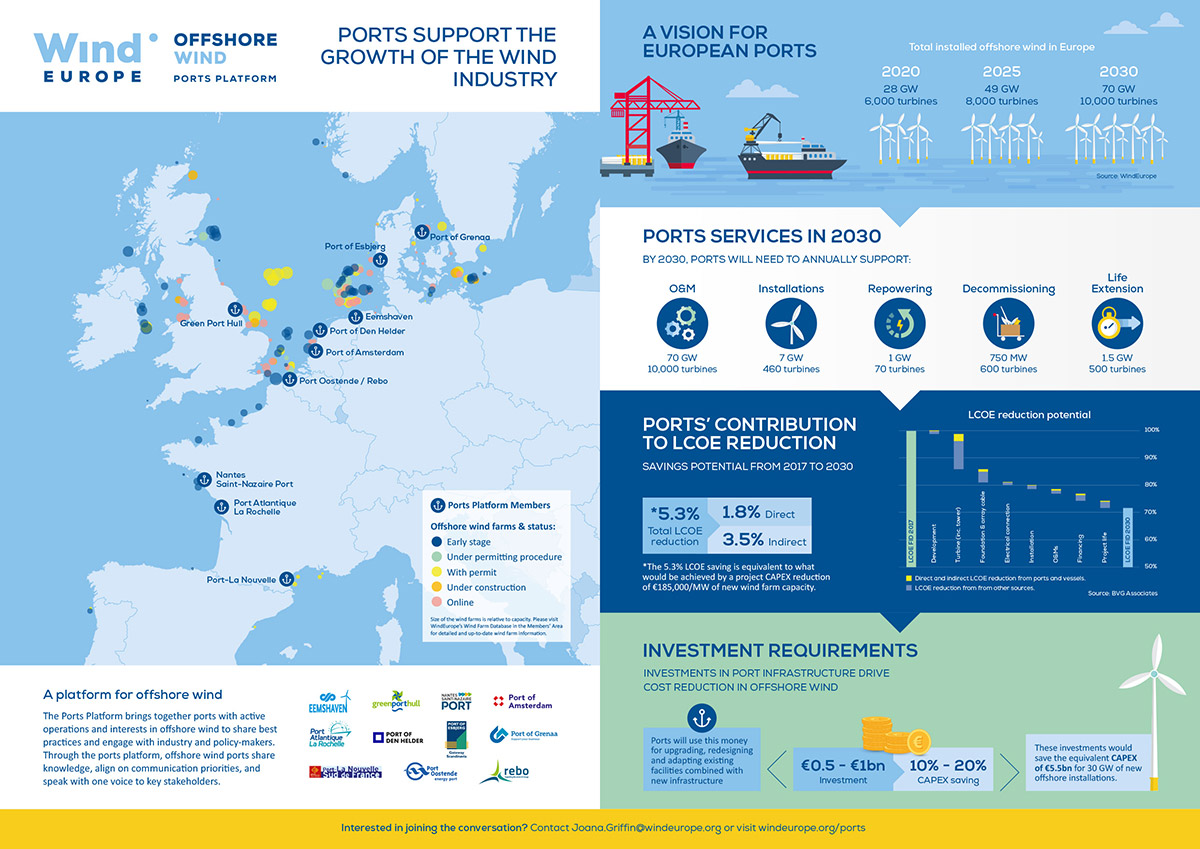News
Investments in port facilities could help offshore wind cut costs by 5.3%

27 September 2018
Investments of €0.5-€1bn in new port infrastructure could help the offshore wind sector to cut costs by up to 5.3%. This is according to figures released by the WindEurope Ports Platform at the Global Wind Summit in Hamburg.
European ports are set to take on an expanded role in the offshore wind supply chain. By 2030 Europe is expected to have installed 70 GW of offshore wind. This means there will be more than 10,000 turbines in the water. This is equivalent to a build-out rate of 6 GW per year, 20% of which will be repowering existing sites with brand new turbines.
In order to enable the growth of Europe’s offshore wind capacity ports will need to invest between €0.5-€1bn in upgrading, redesigning and adapting existing facilities as well as in new infrastructure. This investment would enable ports to offer efficiencies such as in more capable vessels that can complete installations faster. Or in consolidating operations, maintenance and service in dedicated port ‘hubs’.
The building out of new facilities in European ports is urgent as offshore wind turbine components get larger and installation volumes increase.
But the investments are not just required for the future installation, operation and maintenance of offshore wind turbines. New port facilities are also needed to facilitate operations for the annual decommissioning of 750 MW of capacity and annually recycling more than 600 turbines that have reached end of life between now and 2030.
Following these investments in port infrastructure the CAPEX for the installation of 30 GW of offshore wind would be reduced by 5.5 billion which is equivalent to a 5.3% reduction in the Levelised Cost of Energy (LCOE).
WindEurope CEO Giles Dickson said: “Ports are an essential part of the offshore wind supply chain. They are natural centers of industrial activity and help to bring together knowledge and labour to offshore wind. With offshore wind turbine components getting larger and installation volumes going up there’s a need for new investments in port infrastructure. This is also essential as ports will play a key role in accommodating operations related to the decommissioning of offshore wind farms and recycling of components. These investments will help the offshore wind sector to cut costs. And help ports to attract new business activities. We’d be keen to see new public-private partnerships and the allocation of existing EU funds to make this happen.”
WindEurope Ports Platform Chair Wim Stubbe (Port of Oostende): “Ports are continuously deploying new innovations. They adapt their infrastructure to cater for ever larger components, multifunctional vessels and an increased number of activities. The WindEurope Ports Platform provides an opportunity to exchange best practices, know-how and to jointly discuss opportunities and challenges that ports face as the offshore wind industry grows. We are keen to do this at a European rather than national level. We need to work together to prepare for future markets such as the decommissioning of offshore wind farms. It also helps ports to cement their position in the offshore wind supply chain, give visibility to their operations and to underline that they stand ready to serve the offshore wind industry.”
The Ports Platform aims at allowing ports with active operations and interests in offshore wind to come together to share best practices and engage with industry and policy-makers with one voice. Through regular meetings and networking events, offshore wind ports can share knowledge, align on communication priorities, and speak with one voice throughout the industry. Its members are: Groningen Seaports, Green Port Hull, Port of Saint-Nazaire, Port of Amsterdam, Port Atlantique La Rochelle, Port of Den Helder, Port of Esbjerg, Port of Grenaa, Port La-Nouvelle, Port of Oostende and Renewable Energy Base Oostende (REBO).


